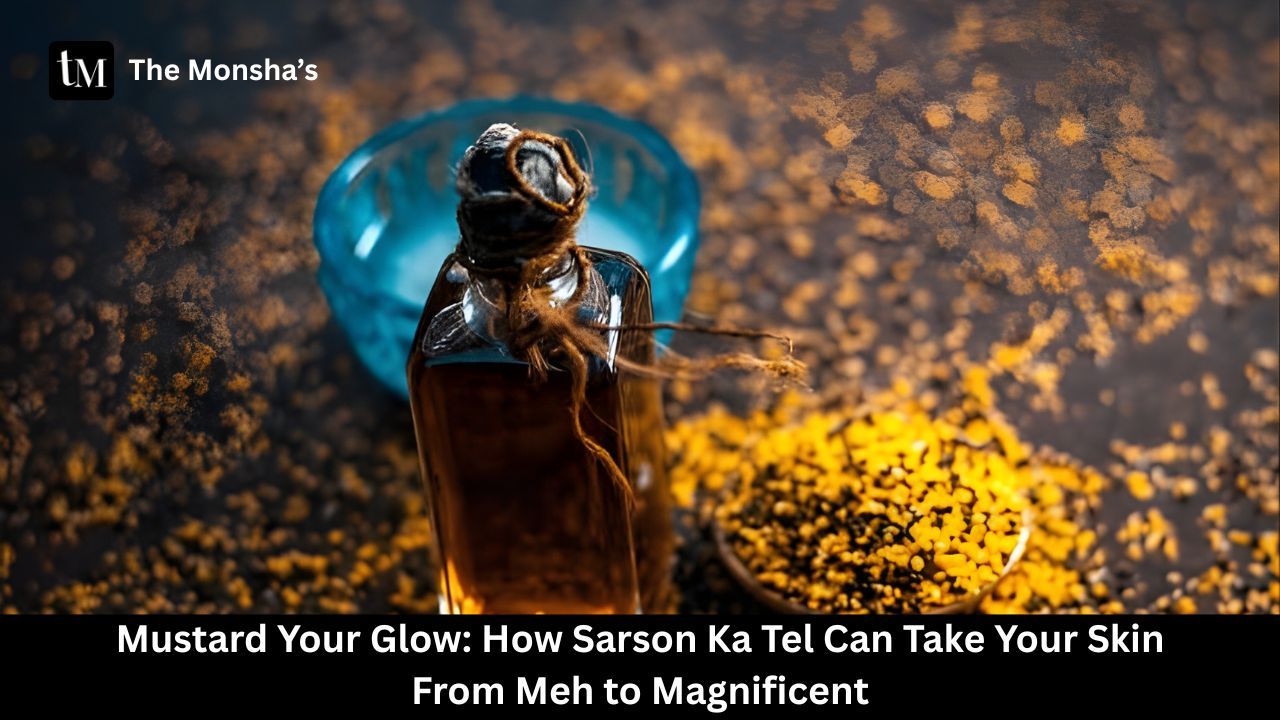
“Sarson ka tel lagao, chehra chamkao…” okay, that’s not exactly how the Bollywood song went, but trust me—if there was ever a beauty remix, this would be it. 😅 We’ve all seen our dadi or nani massaging mustard oil into hair and body like it’s liquid treasure. But what most of us didn’t realize? This same humble kitchen oil is a skincare powerhouse.
And let me be honest, I didn’t believe it either. I rolled my eyes when my mom told me to rub a little mustard oil on my dry winter cheeks. But cut to years later—expensive serums failing, skin barrier crying—I reached for sarson ka tel out of desperation. And wow… my skin didn’t just glow, it felt nourished, calm, and happy.
So, let’s break down the real, science-backed (and desi-approved) benefits of mustard oil for your skin. ✨
Mustard oil isn’t just about that pungent smell you associate with parathas or head massages. Its unique nutritional makeup makes it a skincare underdog:
Dermatology research confirms plant oils rich in fatty acids + antioxidants can significantly reduce transepidermal water loss (read: less dryness, more hydration). That’s why sarson ka tel has been a winter saviour in Indian households for centuries.
Mustard oil is thick, occlusive, and deeply moisturizing—perfect for dry, flaky skin. Its fatty acids nourish and strengthen the skin’s lipid barrier, preventing water loss. Unlike light oils (like jojoba), it gives that “locked in” comfort during harsh winters.
The vitamin E in mustard oil helps fade dullness and protects from environmental stress. Regular use as a massage oil has been shown to improve circulation, leaving skin visibly brighter.
Thanks to its anti-inflammatory compounds, mustard oil can soothe mild irritation, redness, and post-sun damage. No wonder Indian moms always said “sarson tel se malish” in dhoop.
Mustard oil’s isothiocyanates have natural antibacterial properties. They can reduce bacterial growth that leads to acne. But—important—because it’s heavy, acne-prone skin should only use it diluted or as a spot treatment.
Free radicals = wrinkles and sagging. Vitamin E + antioxidants in mustard oil neutralize them, supporting collagen and skin elasticity. A slow but steady anti-ageing helper.
Sarson oil massages were a pre-bath ritual in many homes, especially during winters. Turns out, science supports this—its fatty acids and antioxidants soothe sunburns and may help fade tan when used consistently.

From my experience, mustard oil is best as a weekly ritual rather than daily. Think of it like malish for your skin barrier. Mix it with lighter oils (like almond or jojoba) if you hate the heaviness. And please—don’t forget sunscreen if you’re using it outdoors; otherwise pigmentation won’t leave you.
Who knew the same oil that makes sarson ka saag taste divine could also make your skin glow? 🥘➡️💆 It’s affordable, natural, and packed with benefits. But remember—mustard oil is strong, so use wisely. With the right routine, your skin can actually glow like you just stepped out of a luxury spa (without spending like it).
Not recommended—2–3 times a week is enough.
Use cautiously. Better to dilute or mix with lighter oils.
It brightens and evens tone, but don’t expect “fairness.” It gives glow, not bleaching.
Coconut is lighter for body hydration; mustard is richer for barrier repair and circulation.
Yes, especially in winters. But ensure skin isn’t sensitive to it first.
✨ Bas, that’s the mustard scoop. Thoda sa tel, thoda sa TLC, aur apka skin game ho jayega strong. 🌿💛